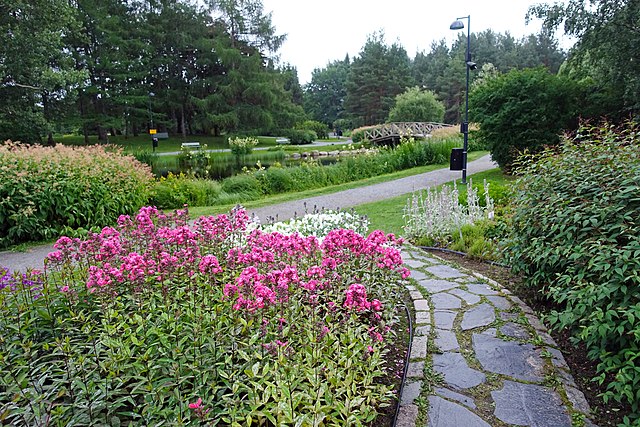A pocket park is a small park accessible to the general public. While the locations, elements, and uses of pocket parks vary considerably, the common defining characteristic of a pocket park is its small size. Typically, a pocket park occupies one to three municipal lots and is smaller than 0.5 hectares in size.
Waterfall Garden Park, Pioneer Square, Seattle, Washington
Paley Park in Midtown Manhattan, New York City, opened in 1967 as one of the earliest pocket parks and privately owned public spaces in the United States.
Pocket parks, such as the Balfour Street Park in Sydney, Australia, can be created from small unused areas of public land.
A contingent from the Youth Opportunities Corps builds a pocket park on a main street in Fitchburg, Massachusetts in July 1973. The creation of pocket parks can promote civic engagement and a unified sense of community identity.
A park is an area of natural, semi-natural or planted space set aside for human enjoyment and recreation or for the protection of wildlife or natural habitats. Urban parks are green spaces set aside for recreation inside towns and cities. National parks and country parks are green spaces used for recreation in the countryside. State parks and provincial parks are administered by sub-national government states and agencies. Parks may consist of grassy areas, rocks, soil and trees, but may also contain buildings and other artifacts such as monuments, fountains or playground structures. Many parks have fields for playing sports such as baseball and football, and paved areas for games such as basketball. Many parks have trails for walking, biking and other activities. Some parks are built adjacent to bodies of water or watercourses and may comprise a beach or boat dock area. Urban parks often have benches for sitting and may contain picnic tables and barbecue grills.

Halley Park in Bentleigh, Victoria, Australia
A park in Turkey
Depiction of a medieval hunting park from a 15th-century manuscript
Hatanpää Park in Tampere, Finland








